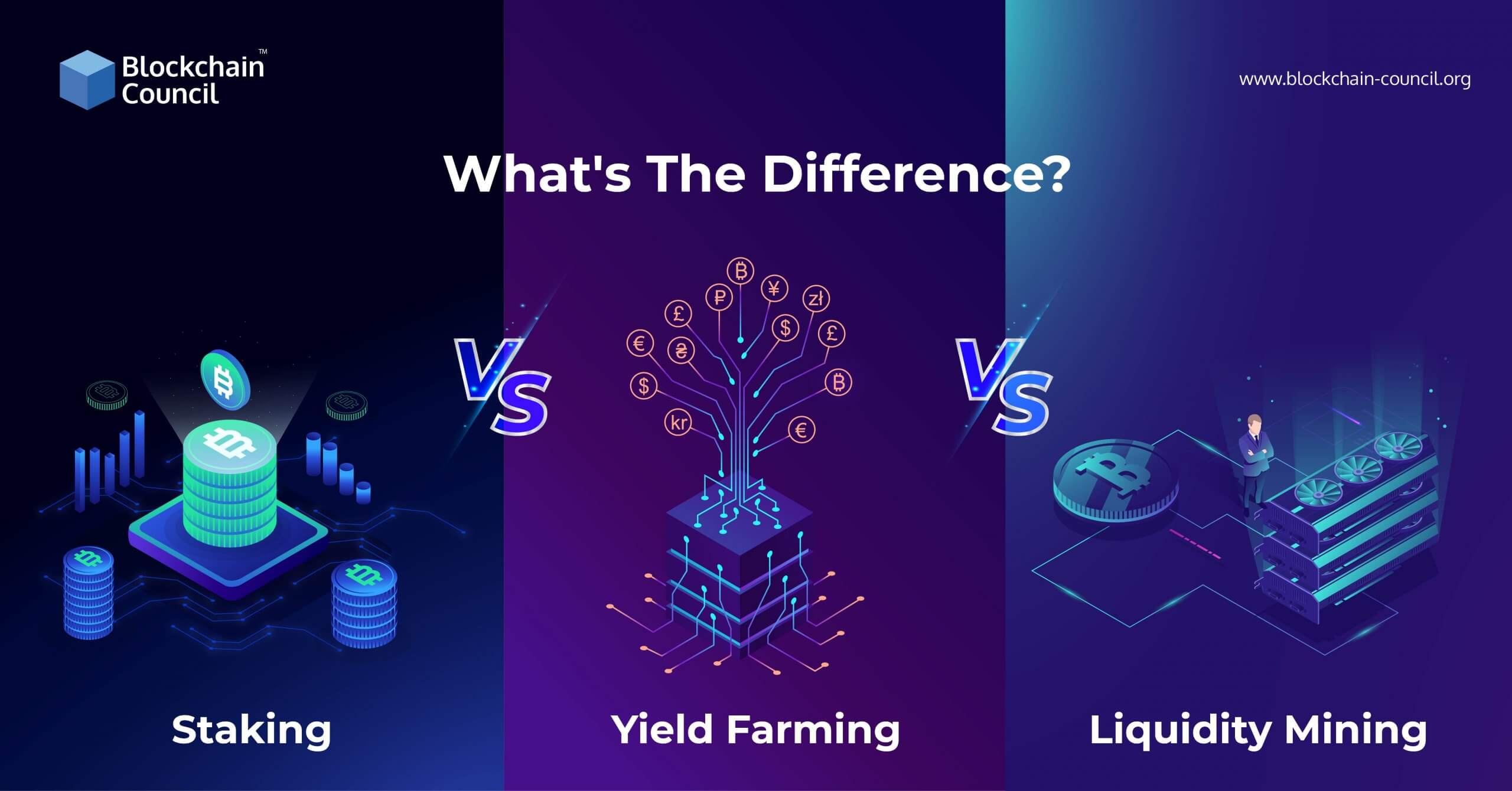Yield farming in DeFi provides some of the highest APY opportunities you’ll find in any financial market. Advanced strategies can deliver potential returns from 50-200%+ APY. The DeFi summer of 2020 saw yield farming explode in popularity, and over the last several years, it has become more sophisticated and available. This piece will help you engineer the highest APY yield farming returns while keeping risks in check.
You need to understand both simple and advanced techniques to develop effective yield farming strategies. New farmers often start with simple liquidity provision. More experienced users can utilize multiple platforms at once and compound their rewards through cross-protocol strategies. Yield optimization in the DeFi space is a vital component that maximizes returns through lending, borrowing, and liquidity provision. We’ll get into the best yield farming strategies on platforms of all sizes, look at high yield farming opportunities on alternative chains like Binance Smart Chain and Solana, and show how yield optimizers can automate the compounding process to achieve the highest yield APY possible.
Understanding Yield Farming Mechanics in DeFi

Yield farming works through a network of connected protocols that help crypto holders earn rewards on their assets. The system builds on decentralized finance mechanisms that combine forces to generate the highest APY yield farming returns.
Liquidity Pool Functionality in AMMs
Automated Market Makers (AMMs) serve as the foundation of yield farming. They replace traditional order books with smart contract-powered liquidity pools. These pools contain cryptocurrency pairs that make trading possible without middlemen. AMMs use mathematical formulas to set token prices based on asset ratios in each pool, rather than matching individual buyers and sellers.
Uniswap made the constant product equation popular: x × y = k, where x and y show the amount of each token in the pool. This simple formula ensures that the pool will balance itself to reflect market prices, whatever the market conditions.
A trader on PancakeSwap deals with the liquidity pool directly instead of another trader. The protocol takes a fee between 0.1% and 1% for each trade. This fee goes to liquidity providers as a reward.
Role of LP Tokens in Reward Distribution
Users get liquidity provider (LP) tokens when they add token pairs to liquidity pools. These tokens prove their pool ownership and help distribute rewards. A $10,000 contribution to a $100,000 pool would earn you 10% of that pool’s LP tokens.
LP tokens create several ways to earn in the yield farming ecosystem:
- Pool transaction fees go to token holders
- Other protocols accept these tokens for staking and extra yield
- The initial deposit can work harder by farming yields on multiple platforms
LP tokens multiply liquidity’s power in DeFi. Assets can work in several protocols at once. An investor can put Bitcoin in a Curve Finance liquidity pool, get LP tokens, and stake them back into Curve to earn CRV governance tokens.
Smart Contract Automation in Yield Farming
Smart contracts are the building blocks of yield farming. They run complex processes automatically without middlemen. These programs handle key tasks such as:
- Locking mechanisms to protect user assets
- Reward distribution based on set rules and contribution size
- Fee collection and allocation from pool trades
Smart contracts make yield farming run smoothly with minimal human input. Yearn Finance’s smart contracts automatically put user funds into the most profitable lending pools and liquidity mining opportunities.
These contracts set and change Annual Percentage Rates (APRs) using protocol-specific formulas. Pool creators sometimes set APRs manually, but most modern platforms let smart contracts adjust rates based on market conditions and trading volume.
Auto-compounding protocols take automation further. They employ smart contracts to reinvest rewards automatically, which maximizes returns through compound interest. Farmers don’t need to harvest and restake rewards by hand. They can let specialized protocols optimize their strategies to achieve the highest yield APY possible.
Key Metrics Behind APY Calculation
You need to understand the mathematics behind yield farming returns to maximize your profits in DeFi. DeFi presents a complex mix of metrics that affect your bottom line, unlike traditional finance where returns are straightforward.
APY vs APR in DeFi Yield Context
Annual Percentage Yield (APY) and Annual Percentage Rate (APR) are the foundations of accurate return calculations in yield farming. Both metrics show compensation from crypto activities but represent different concepts.
APR shows a simple calculation of interest earned over a year without compound interest. To cite an instance, see what happens when you stake 1 ETH at 5% interest – your APR stays at 5%, giving you 0.05 ETH at year’s end. This quick way helps compare different financial opportunities without factoring in compound effects.
APY shows the real rate of return on your investment over a year and includes compounding—where rewards go back into the pool. Here’s the formula for APY:
APY = (1 + r/n)^n – 1
The ‘r’ represents annual interest rate while ‘n’ shows compounding frequency. This calculation reveals how your earnings grow as compound interest kicks in.
Real returns show this difference clearly. A protocol offering 9% APR with daily compounding turns into 9.38% APY. New DeFi users often get surprised when these two rates don’t match.
Compounding Frequency and Its Effect on Returns
Your final returns in yield farming depend heavily on how often compounding happens. Research shows more frequent compounding creates higher yields. Different platforms handle compounding in their own ways:
| Platform | APR | APY | Compounding Frequency |
| Aave | 9.00% | 9.38% | Daily |
| Uniswap | 12.00% | 12.68% | Weekly |
| Curve | 8.00% | 8.31% | Monthly |
| SushiSwap | 14.00% | 14.87% | Hourly |
Similar APRs can give different APYs based on compounding frequency. Staking 1 BTC at 6% APY with monthly compounding gives you much better returns than annual compounding.
Auto-compounding platforms have become popular as users chase the highest yield APY. These platforms reinvest your rewards automatically, so you don’t have to claim and restake manually.
Many platforms don’t clearly show their compounding frequency. Some advertise sky-high APYs using super-frequent compounding (even hourly), which can mislead investors. Always check the compounding schedule before putting big money into a yield farming strategy.
Hidden Fees That Affect Net APY
Your actual returns can get reduced by several hidden fees:
- Deposit Fees: Some farms take upfront fees when you add liquidity. A 2% deposit fee means your $100 deposit starts at $98 for earning yield.
- Transaction Fees: Every transaction (claiming and restaking) costs gas. Each transaction needs about 0.001 ATOM on Cosmos-based chains. These fees create problems especially on Ethereum, where gas costs can make some strategies unworkable.
- Performance Fees: Yield optimization platforms usually take a cut from the profits they generate. These cuts affect your net returns.
- Withdrawal Fees: Some protocols charge penalties for early withdrawal that can eat into your overall returns.
The real yield farming formula with fees looks like this: P(1 + r/n)^n – n*0.001 – other fees
Platform fees can also affect your long-term returns. The best platforms offer dynamic APYs that change based on liquidity demand, token incentives, and market changes.
Use profitability calculators before committing funds to avoid mistakes while chasing the highest APY yield farming opportunities. These tools help you compare compounding strategies and set real expectations for DeFi returns, especially with complex stablecoin yield farming approaches or cross-protocol strategies.
Advanced Yield Farming Strategies for High Returns
Going beyond simple yield farming, experienced DeFi users can get high returns through advanced strategies that combine multiple protocols and techniques. These sophisticated methods need deeper technical knowledge and can generate returns ranging from 15% to over 100% APY.
Leveraged Yield Farming on Alpha Homora
Leveraged yield farming is one of the most powerful ways to increase returns. Alpha Homora, a specialized protocol on Ethereum and BNB Chain, lets farmers multiply their original positions by borrowing more assets. Users can provide liquidity up to 2.5x their portfolio size, which leads to much higher potential rewards.
The process is simple yet powerful: users deposit assets as collateral, borrow more tokens, and put the combined amount into yield-generating positions. This multiplier effect creates returns that are way higher than standard yield farming—potentially reaching 50-200%+ APY for experienced users.
The downside is that leverage brings big liquidation risks. Asset values that move unfavorably can trigger liquidations and lead to partial or complete loss of invested capital. So this strategy works best for experienced farmers with high risk tolerance who can watch market conditions closely.
Stablecoin Yield Farming on Curve Finance
Stablecoin yield farming on Curve Finance gives impressive returns with moderate risk. Curve excels at efficient stablecoin trading through its unique AMM algorithm that works best with similarly-priced assets.
Curve’s value comes from its specialized approach to minimize impermanent loss—a common yield farming challenge. The platform creates pools with low volatility and steady returns by focusing on stablecoins like USDC, DAI, and USDT. These stablecoin strategies usually generate 5-20% APY, making them great for conservative investors and beginners.
The platform’s CRV token adds more yield opportunities. Users earn CRV rewards and trading fees by staking LP tokens, which creates multiple income streams from one position. Curve’s connection with protocols like Yearn Finance and Synthetix maximizes incentives through “DeFi composability”.
Cross-Protocol Farming with LP Token Stacking
LP token stacking across multiple protocols is one of the most sophisticated yield techniques. This strategy uses LP tokens as assets in other protocols.
Dual-yield LP tokens show this advanced approach in action. Farmers earn multiple reward streams from a single liquidity position. The process works in layers:
- Provide liquidity to a decentralized exchange to earn trading fees (0.05% to 1% per swap)
- Receive LP tokens for your position
- Stake those LP tokens in another protocol to earn more rewards
- Move the resulting tokens to a third protocol if desired
This layering multiplies returns. Users can deposit DAI to Curve’s crypto liquidity pool, get LP tokens, then put those LP tokens in Curve’s staking pool to earn extra CRV tokens. Cross-protocol strategies can yield between 20-100% APY based on platform choices and market conditions.
Auto-Compounding via Beefy Finance Vaults
Transaction costs and time make frequent manual compounding impractical. Beefy Finance solves this with automated vaults that optimize the compounding process.
Beefy’s vaults use investment strategies that automatically compound farm reward tokens back into users’ original assets. Smart contracts harvest rewards many times daily and reinvest them, which saves users from making countless small transactions.
Auto-compounding becomes crucial with higher APRs:
- 30% APR with daily compounding becomes 34.9% APY
- 60% APR with daily compounding becomes 82.1% APY
- 120% APR with daily compounding becomes 231.4% APY
The protocol finds the best compounding frequency by looking at gas costs and expected returns. This turns yield farming from an active process into a truly passive investment strategy. Beefy’s performance fees on harvested rewards are often worth it, especially for higher APR opportunities.
Risk Engineering for Sustainable Yield
DeFi yield farming success depends on robust risk management techniques. High APYs might look tempting, but overlooking risks can wipe out profits or lead to devastating losses. Risk engineering skills separate successful yield farmers from those who see only temporary gains.
Impermanent Loss Yield Farming Mitigation Techniques
Token price changes in liquidity pools create impermanent losses when they deviate from initial deposit values. These losses grow as prices diverge more—a 100% price change in one asset leads to about 5.7% impermanent loss, while a 400% change results in a 25.5% loss. Several strategies can help protect against these losses:
Stablecoin Pool Selection: Liquidity provision to stablecoin pairs like USDC/DAI or USDT/BUSD reduces impermanent loss risk because these assets keep their price parity. Lower APYs are common, but steady performance makes these pools perfect for protecting capital.
Concentrated Liquidity Positioning: Modern AMM designs like Uniswap v3 let you focus liquidity in specific price ranges. This improves fee collection and limits exposure to unwanted price swings. The strategy works best when you’re confident about an asset’s trading range.
Protocol-Level Protection: Many platforms now help offset impermanent loss. Bancor led this innovation with single-sided staking and systems that cover impermanent loss for users who stick with pools for set periods.
Smart Contract Audit Verification Tools
Smart contract vulnerabilities pose major risks—even audited code can hide dangerous bugs. The Wormhole hack showed this clearly when $320 million disappeared due to one flaw. Verification becomes crucial:
Professional Audit Reports: Check if protocols have security audits from trusted firms like CertiK or ChainSecurity before investing. These reviews rank issues from Critical to Informational. Look past the audit stamp and verify if teams fixed reported problems.
Formal Verification: Mathematical techniques prove smart contract behavior matches specifications. This adds extra security beyond regular audits.
Risk Assessment Tools: DeFi Safety and similar platforms score protocols based on their transparency, code quality, and security measures. These scores help you review protocol safety before investing.
Diversification Across Chains and Protocols
Your assets become more resilient against protocol failures when spread across multiple platforms:
Cross-Chain Allocation: Put your investments across different blockchains like Ethereum, Solana, and Avalanche. This protects against chain-specific problems and opens up more yield opportunities.
Protocol Diversification: Keep your investment in any single protocol under 20-30%. A complete failure in one platform won’t destroy your entire yield farming strategy this way.
DeFi Insurance: Protection from providers like Nexus Mutual or InsurAce guards against smart contract exploits. Annual premiums run 2-5%, but this cost makes sense for larger positions.
These risk engineering techniques help build lasting yield farming strategies that maximize returns while protecting your capital from DeFi market swings.
Platform Selection for Maximum Yield Optimization
The life-blood of any successful yield farming strategy lies in choosing the right platform. Farmers need to know how to maximize returns and manage risk profiles by understanding the differences between yield optimization tools.
Comparing Yield Optimization Platforms: Yearn vs Autofarm
Yearn Finance leads the pack of yield aggregators with its institutional-grade vault strategies that professional strategists manage. The platform takes user capital and puts it to work across DeFi protocols of all types like Aave, Curve, and Convex to get better yields. Regular security audits help Yearn deliver APYs between 4% and 30%, which depends on your chosen strategy.
Autofarm takes a different approach as a cross-chain yield aggregator. Users earn returns from yield farming pools by staking in their vaults. The platform shines because it works with many blockchains including BNB Chain, Fantom, Avalanche, and Arbitrum.
Evaluating Protocol Fee Structures and Tokenomics
Fee structures affect your net returns by a lot. Here’s what you need to think over:
- Deposit fees: All but one of these farms charge fees upfront when you add liquidity
- Performance fees: Yield aggregators take a cut of the profits they generate
- Withdrawal fees: Some protocols charge penalties if you exit early
Tokenomics is a vital part of keeping platforms sustainable. The best yield farming platforms control token supply through burns or reward allocations. These choices affect how well the platform works long-term and what returns you might see.
Best Yield Farming Crypto Platforms by APY Range
Different asset classes show varied APY ranges:
- Stablecoins: Curve Finance specializes in stablecoin liquidity pools and offers 5-15% APY with lower impermanent loss risk
- Blue-chip assets: Ethereum-based positions give you 3-7% for staking and 10-20% in liquidity pools
- Exotic pairs: PancakeSwap can boost APRs above 100% on specific liquidity pairs
Your risk tolerance determines the ideal platform choice. Yield aggregators like Beefy Finance and Yearn Finance compound returns automatically, which is the quickest way to grow your investment through reinvestment strategies.
Monitoring and Adjusting Yield Strategies
DeFi portfolio management requires constant alertness and strategic adjustments. You need specialized tools that provide detailed visibility in the DeFi world to get optimal yield farming returns.
Using DeFi Dashboards like Zapper and DeBank
Zapper excels as a leading DeFi dashboard that supports multiple blockchains including Ethereum, Binance Smart Chain, Polygon, Fantom, Avalanche, and Arbitrum. The user-friendly platform helps farmers assess total wallet value among other investments like staking rewards and liquidity positions. Users who manage multiple wallets find great value in the platform’s bundling feature that creates a unified view of yield farming activities.
DeBank stands as no match for other platforms in DeFi protocol coverage. The platform goes beyond simple portfolio tracking and lets users view transactions across multiple blockchains and monitor DeFi applications in one interface. Yield farmers can follow top Web3 accounts and find new yield opportunities through community insights with its social features.
Tracking Real-Time Yield Farming Rates
Portfolio trackers give vital data to monitor yield performance. Good yield farming analytics help spot underperforming investments and sustainable yield opportunities. Experienced farmers analyze historical returns over 30+ days to find consistent performers instead of chasing unsustainably high APYs.
De.Fi Explore Yields offers extensive databases of yield data in a variety of platforms, complementing portfolio dashboards. These tools help farmers compare rates across protocols and optimize their strategies.
Rebalancing Based on Market Volatility
Market volatility makes regular strategy adjustments necessary. High volatility periods create opportunities to add value through disciplined portfolio rebalancing. Successful yield farmers use informed approaches to market monitoring and analyze factors like asset volatility, pool performance, and interest rates.
Smart rebalancing helps farmers move resources between farming opportunities when market conditions change. This active approach helps capitalize on emerging yield opportunities instead of staying in deteriorating positions.
Conclusion
Yield farming stands out as one of the most profitable opportunities in decentralized finance. It offers returns that substantially exceed traditional investment options. This piece explores the sophisticated mechanics of generating optimal yields while managing the inherent risks in the DeFi ecosystem.
Farmers need to grasp the basic difference between APY and APR to evaluate farming opportunities better. The way compounding frequency affects long-term returns helps them make smarter decisions about which platforms to choose. Smart farmers look past attractive advertised rates to calculate actual returns after gas fees, performance fees, and potential impermanent loss.
Experienced users can boost their returns through advanced strategies like leveraged farming on Alpha Homora, stablecoin pools on Curve Finance, and cross-protocol LP token stacking. All the same, these higher yields bring greater risks that need careful management through diversification and regular monitoring.
Risk engineering remains the most critical part of sustainable yield farming. Users protect their capital while pursuing attractive returns by carefully selecting pools to minimize impermanent loss, verifying smart contract audits thoroughly, and using mutually beneficial alliances across chains and protocols.
The right platform choice creates better yield optimization opportunities. Each protocol has its advantages in fee structures, tokenomics, and supported assets. Farmers should match their risk tolerance with suitable platform features instead of chasing the highest advertised APYs.
Market conditions change faster in DeFi, so tools like Zapper and DeBank are essential to track performance and spot rebalancing opportunities. Yield farmers who adjust their strategies based on market changes usually perform better than those who stick to static approaches.
DeFi yield farming keeps evolving as state-of-the-art solutions emerge regularly. While unpredictable market movements and smart contract risks remain ongoing challenges, knowledgeable farmers who use disciplined risk management and strategic yield optimization techniques can generate consistently high returns in this dynamic financial ecosystem.
Key Takeaways
Master these essential strategies to unlock DeFi’s highest yield farming returns while protecting your capital from common pitfalls.
• APY vs APR matters significantly: True returns come from APY calculations that include compounding effects – a 9% APR with daily compounding becomes 9.38% APY, directly impacting your profits.
• Advanced strategies multiply returns: Leveraged farming on Alpha Homora and cross-protocol LP token stacking can generate 50-200%+ APY, but require active risk management and technical expertise.
• Hidden fees destroy profits: Factor in deposit fees, gas costs, performance fees, and withdrawal penalties when calculating net returns – these can reduce advertised yields by 2-5% annually.
• Risk engineering prevents catastrophic losses: Diversify across chains and protocols, verify smart contract audits, and use stablecoin pools to minimize impermanent loss while maintaining sustainable yields.
• Platform selection drives optimization: Choose yield aggregators like Yearn Finance or Beefy Finance for automated compounding, and use monitoring tools like Zapper to track real-time performance across multiple protocols.
The key to successful yield farming lies in balancing aggressive return strategies with disciplined risk management. While DeFi offers unprecedented earning potential, sustainable profits require continuous monitoring, strategic rebalancing, and thorough understanding of the underlying mechanics that drive these extraordinary returns.
FAQs
Q1. What is yield farming in DeFi? Yield farming is a strategy in decentralized finance (DeFi) where users provide liquidity to various protocols and earn rewards in return. It typically involves depositing cryptocurrency assets into liquidity pools to generate passive income through interest, transaction fees, and token rewards.
Q2. How does APY differ from APR in yield farming? APY (Annual Percentage Yield) accounts for compound interest, while APR (Annual Percentage Rate) does not. In yield farming, APY provides a more accurate representation of potential returns as it factors in the reinvestment of earnings, which can significantly boost overall yields over time.
Q3. What are some advanced yield farming strategies? Advanced strategies include leveraged yield farming on platforms like Alpha Homora, stablecoin farming on Curve Finance, and cross-protocol farming by stacking LP tokens. These methods can potentially generate higher returns but also come with increased risks and complexity.
Q4. How can I mitigate risks in yield farming? To mitigate risks, diversify your investments across different chains and protocols, use stablecoin pools to reduce impermanent loss, verify smart contract audits, and consider DeFi insurance. Regular monitoring and rebalancing of your portfolio based on market conditions is also crucial.
Q5. What tools can I use to monitor my yield farming investments? DeFi dashboards like Zapper and DeBank are useful for monitoring yield farming investments. These tools provide comprehensive visibility across multiple blockchains and protocols, allowing you to track real-time yields, assess total wallet value, and identify rebalancing opportunities.




